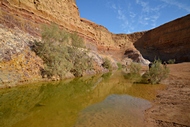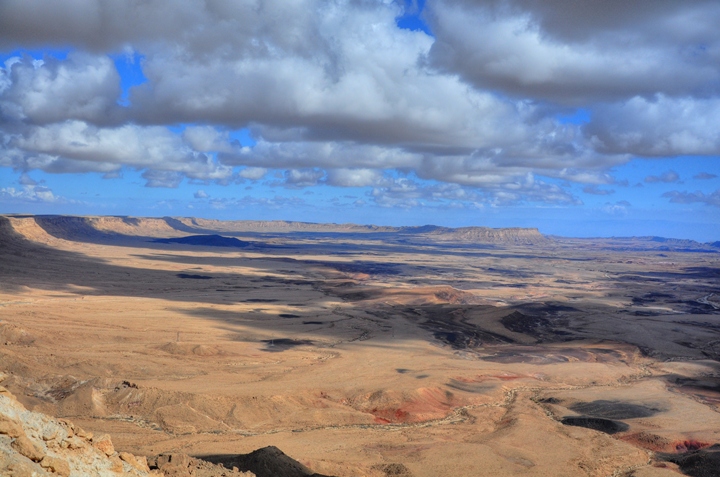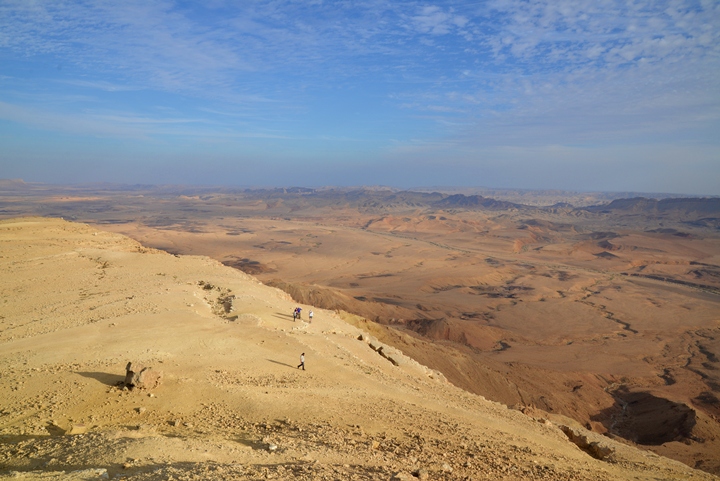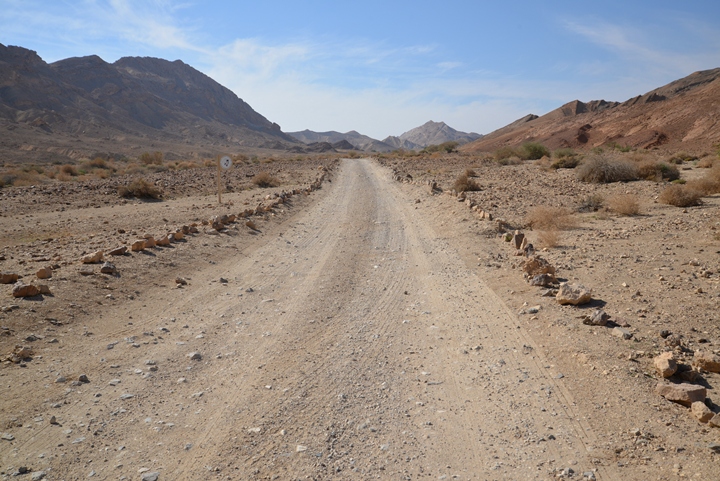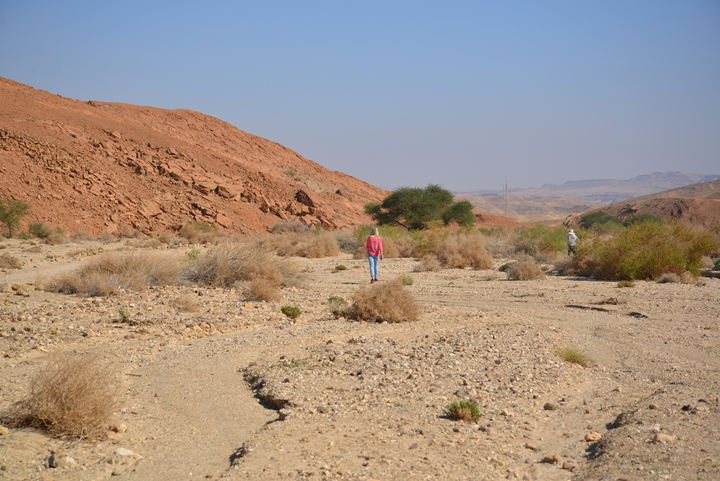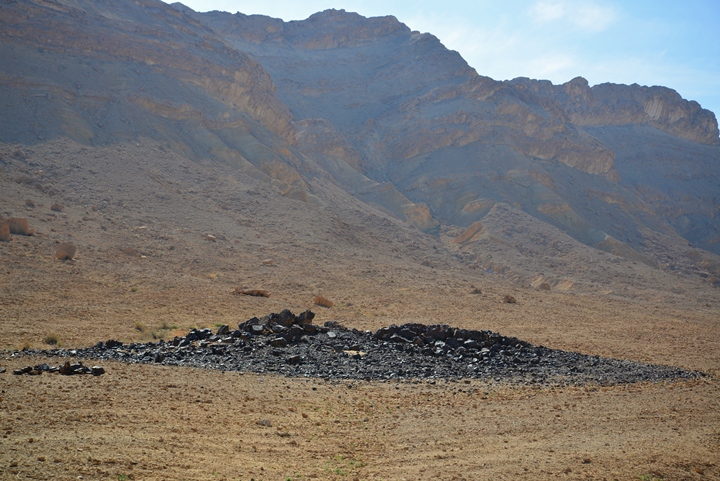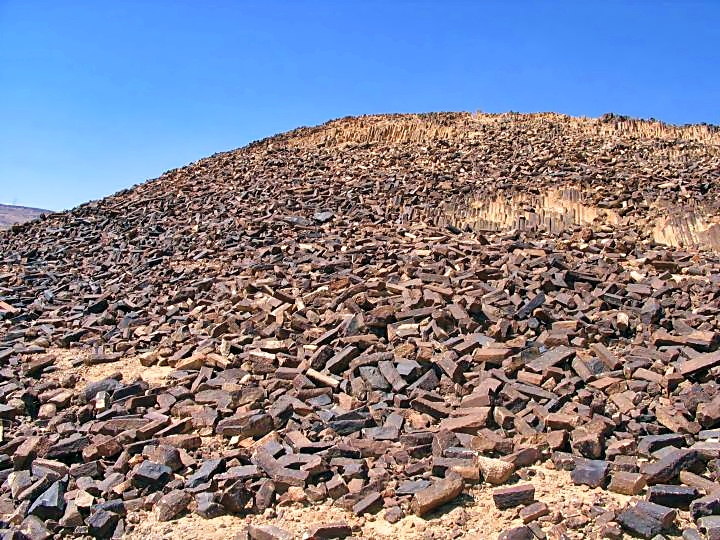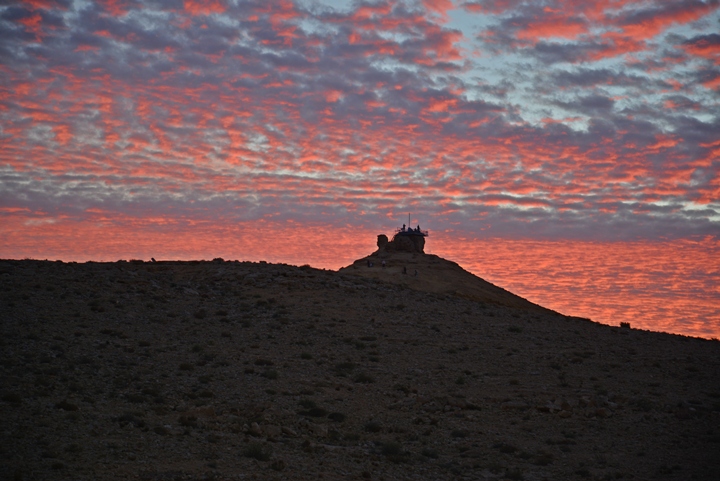Overview and sites in Makhtesh Ramon, a geological crater in the center of the Negev highlands.
Home > Sites > Negev> Makhtesh Ramon (Overview)
Contents:
* Saw Mill
Overview:
The large Ramon Makhtesh (geological crater) is located in the center of the Negev desert, having an arid climate with 30mm annual precipitation. The structure of the area is an anticline – a geological fold that is convex up – with a central eroded valley. The Makhtesh is 40KM long by 9KM wide, with steep walls of 400m height bounding the valley.
Location and Map:
Makhtesh Ramon, a large nature reserve, is located in the center of the Negev highland area. It is 400M deep: its rim is ~900M above sea level, while the floor of the crater is at an altitude of ~500M.
Road #40 from the town of Mitzpe Ramon, southwards to Eilat, crosses the center of the crater. Along the road are interesting points to stop, hike and explore.
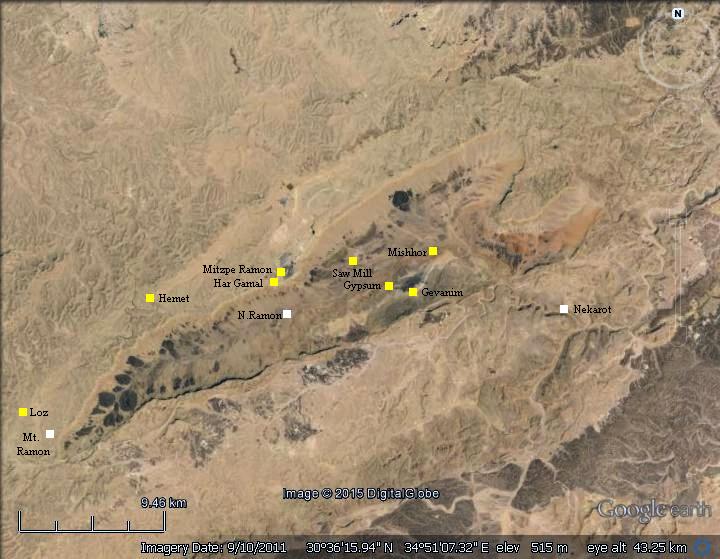
History:
-
Prehistory – Phase 1 (190 Million – 5 million years ago)
This geological erosion cirque was created through a natural process over a period of 200 million years. The earliest layer of the Makhtesh is of the Jurassic period. The Negev geological early history is summarized in the following table. It shows the various periods of the geological processes that created the Negev landscape before the Makhtesh was created.
| Date [million years ago] | Geological
Periods |
Cause | Effect |
| before 201 | African plate created | Under the lowest layer | |
| 201-145 | Jurassic | Tethys Ocean covering Negev | Water sedimentary rock forms a 2nd layer |
| 145-100 | Early Cretaceous | Tethys Ocean recedes | Land sedimentary rock forms a 3rd level |
| 100-92 | Cenomanian | Tethys Ocean covering Negev again | Water sedimentary rock forms a 4th layer |
| 92-65 | Turonian – Paleocene | Tectonic pressure of African and European plates (push from north and south) | Geological folds of the layers under the sea level |
| 65-35 | Paleocene,
Eocene |
Tectonic pressure continues; Ridges above water are clipped | Soft layers are exposed |
| 35-22.5 | Oligocene | Tethys Ocean recedes through westward streams
Syrian-African depression develops due to Tectonic pressure between African and Arabian plates (west-east) |
The surface of the Negev is exposed; Erosion continues on land
|
| 22.5-5 | Miocene | Erosion continues on land |
-
Prehistory – Phase 2 (5 million years ago-8,000 years ago)
This table shows the events related to the makhtesh, due to the sinking of the Arava (Arabah) along the Syrian-African depression.
| Date [million years ago] | Geological
Periods |
Cause | Effect |
| 5-2.5 | Pliocene | Area on the east of the Makhtesh sinks; Makhtesh stream changes direction eastward;
Soft layers are sucked out |
Westward stream changes direction towards the depression on the east
The surface of the Makhtesh is hallowed and sinks, creating the erosion crater |
The Arava (Arabah) Rift valley, east of the crater, was formed starting at about 25 million years ago. It is 350m below sea level at its northern location at the south side of the Dead Sea, and 50m below sea level at the point where Nahal Nekarot stream, which drains the Makhtesh, joins the Arava valley. This fault is the lowest place in the World. This depression started the process of sucking out the soft rock under the surface of the Makhtesh, hallowing it out. The bottom of the area sank down, while the solid rocks around it remained at the same level, thus creating a round depression. This process of erosion continued until a crater was formed. Over the millions of years the height difference between the bottom and the cliffs around the crater reached 400-500m.
Since the area is dry and inhabited, the state of the Makhtesh remained as it was thousands of years ago. We can see along the steep walls of the rim the various geological layers, starting from 200 millions years ago (when the ancient sea covered the area), through the different geological phases listed in the tables above.
Photos:
(a) General Views:
A view from Mitzpe Ramon towards the east side of Makhtesh Ramon is seen in this photo. The Makhtesh is 40KM long by 9KM wide, with steep walls of 400m height bounding the valley. The only highway (#40) through the bottom of the crater is on the left side, crossing the crater towards the south side.
Click on the photos to view in higher resolution…
The Makhtesh area is too large to fit into one photo. So here is another view, this one from Camel Hill on the south side of Mitzpe Ramon.
(b) Nahal Gevanim:
The dry brook of Nahal Gevanim starts from Mt. Gevanim on the east side of Makhtesh Ramon. Mt. Gevanim, at an altitude of 609m, is seen here in the far background right of the road.
The brook flows eastwards and joins Nahal Ramon near Ein Saharonim, just before flowing out to the Arava depression through Nahal Nekarot .
The trail along Nahal Gevanim starts from Road #40 just before its ascent to the south. The first view on the south side is the impressive Mt. Qattum (alt. 647m). Its name means in Hebrew: “trimmed”, as the top of the mountain seems like its edge was cut off.
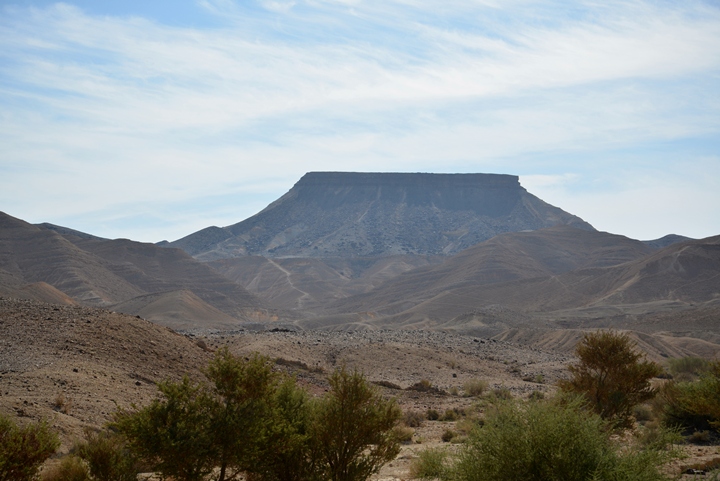
Scenes along the trail are fascinating. The dry desert scenery is so different from what us people from the wet areas of Israel are used to, and it has its charm.
The mountains along the south rim of Makhtesh Ramon, such as Mt. Saharonim, are ~130m above the valley.
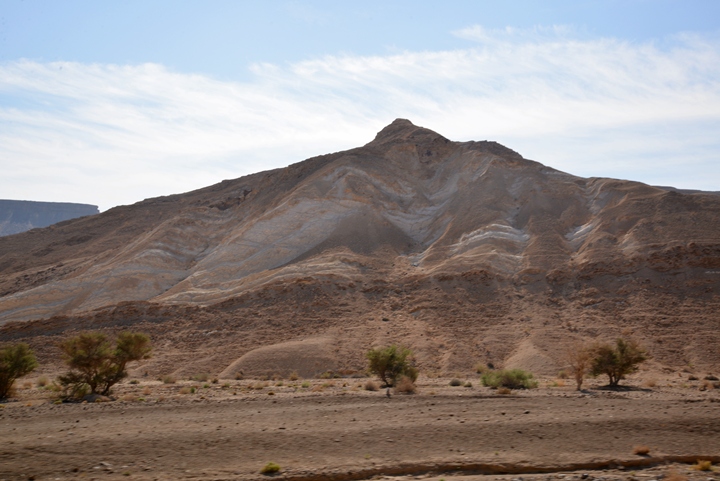
- Vegetation
Nahal Gevanim is dry most of the days, as this area has an average of only 30mm annual precipitation. Nevertheless, some green spots can be seen here and then.
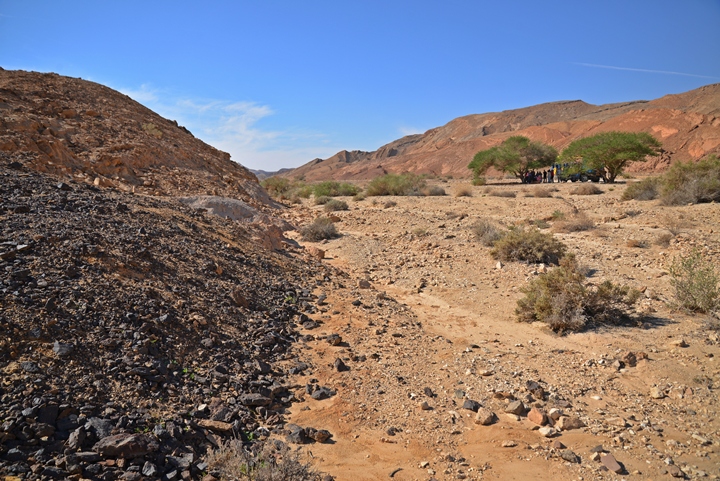
On our way along the brook we stopped for tea in the shade of these Shittah (Acacia) trees. This tree is referred 26 times in the Exodus, such as the wood for building the ark and the table (Exodus 25:5 and 23): “And they shall make an ark of shittim wood…Thou shalt also make a table of shittim wood…”.
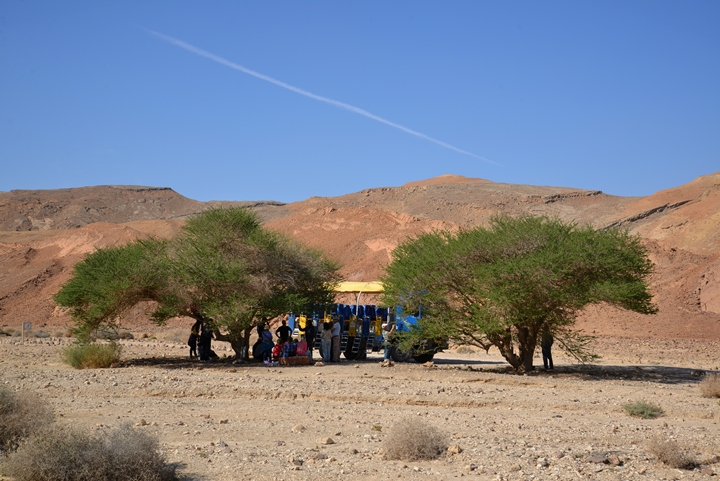
The dry bushes and thorns along the course of the brook are remains from the previous winter season.
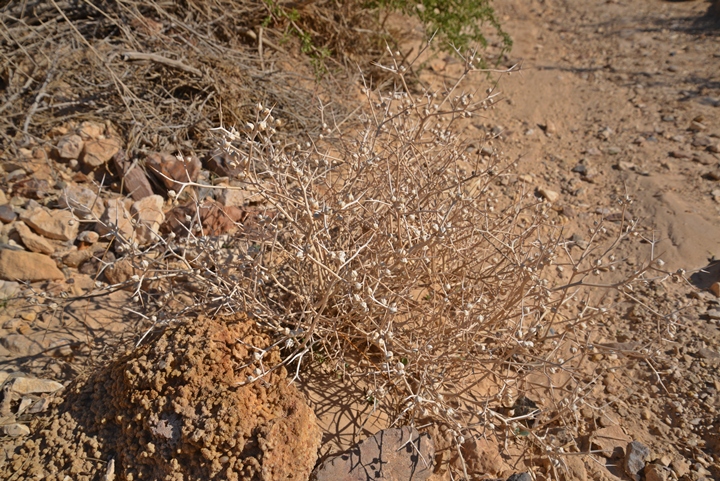
After a rare rain, small bushes start to grow in the middle of the brook amid the dry ones.
In the following photos are some samples of life in the desert.
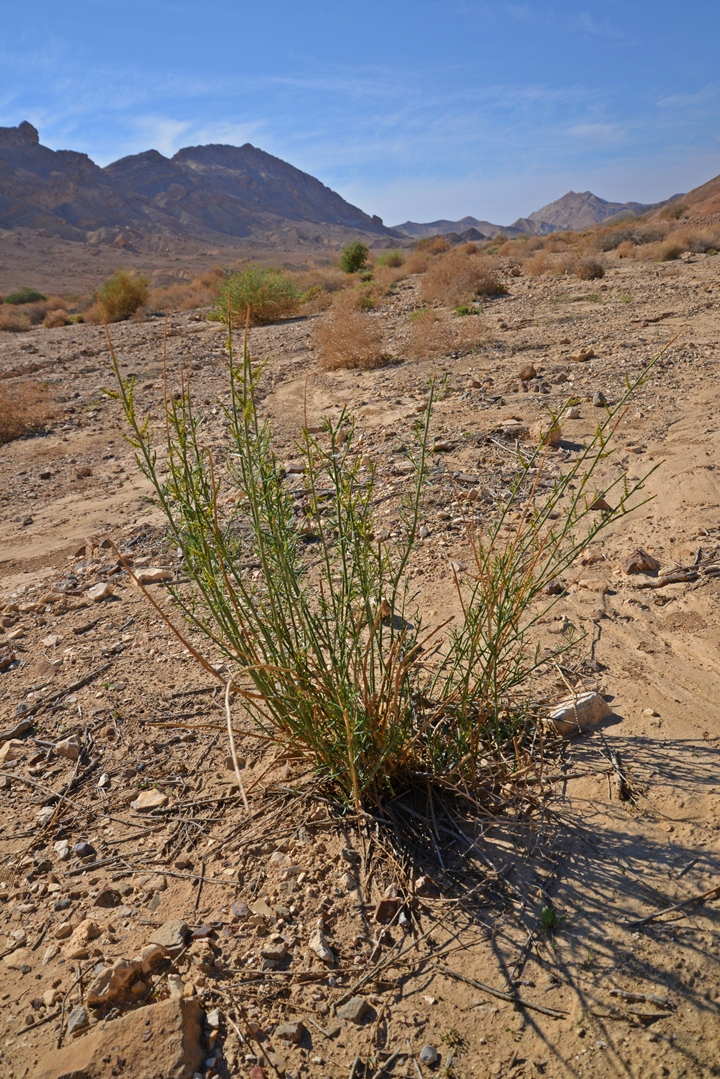
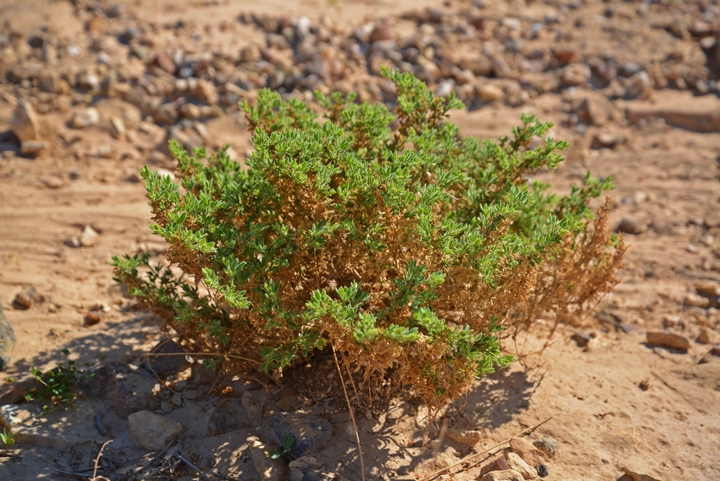
- The Rocks
Amazing rock formations and types are seen along the course of the brook.
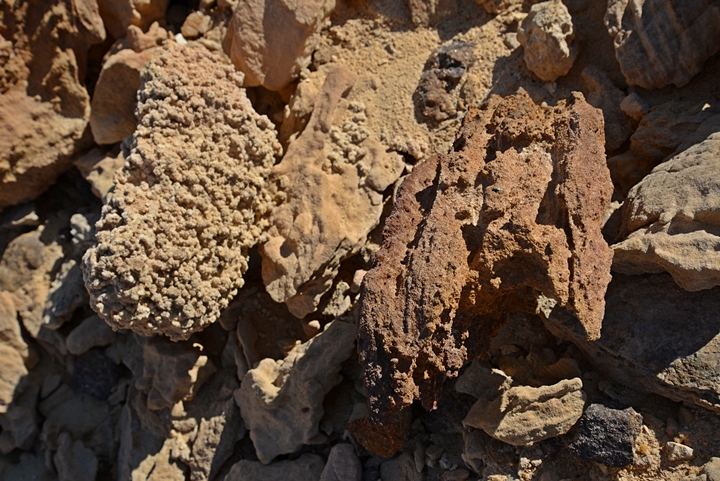
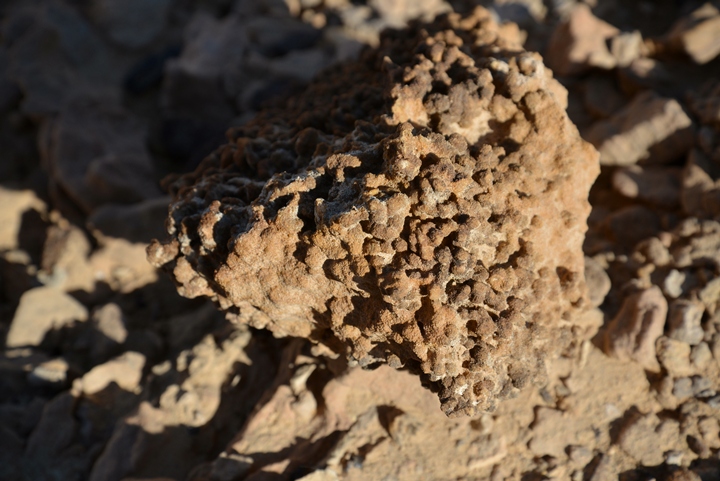
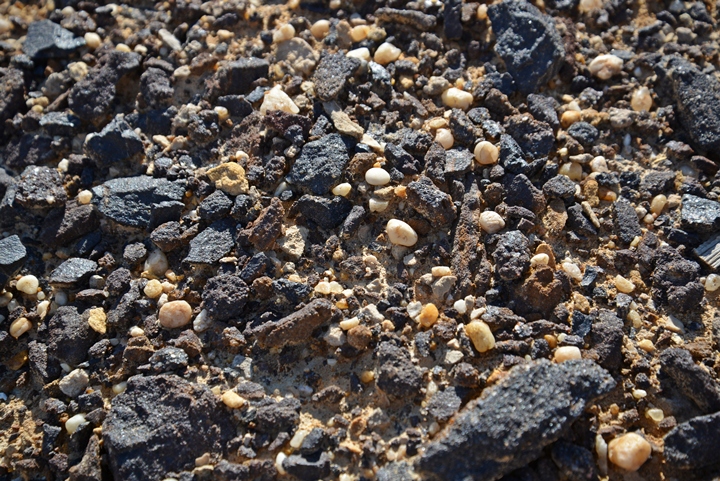
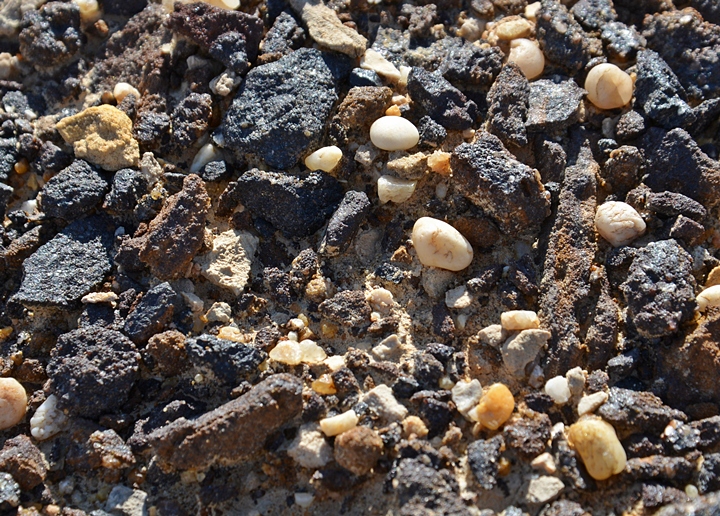
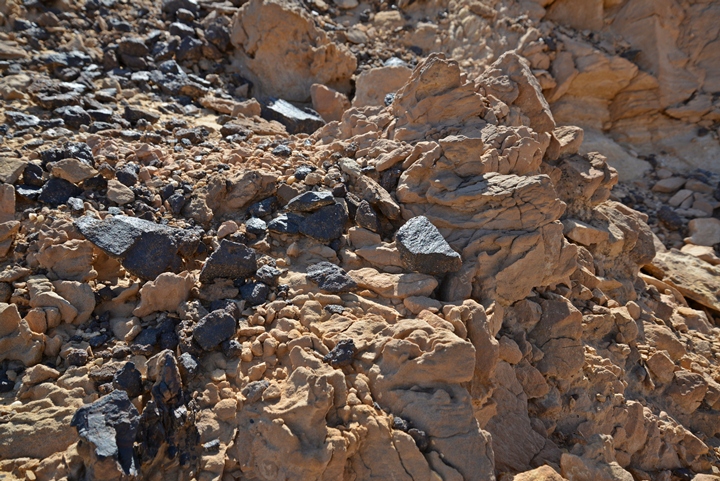
- Birds
Few animals and birds are observed in this desert area.
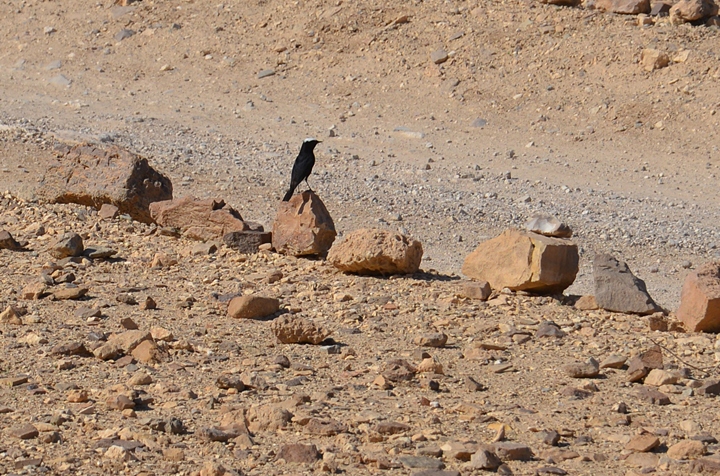
(c) Mish’hor Springs:
An abandoned quarry is located in the Mishhor valley, 200m south of the Ramon stream, which is the main drainage creek of Makhtesh Ramon. The colorful layers display a geological history, with the lower layer dating to the Jurassic period (201.3-145 Million years ago) – the earliest layer in Makhtesh Ramon – and the higher layers are younger, dated to the Cretaceous period (145-66 million years ago).
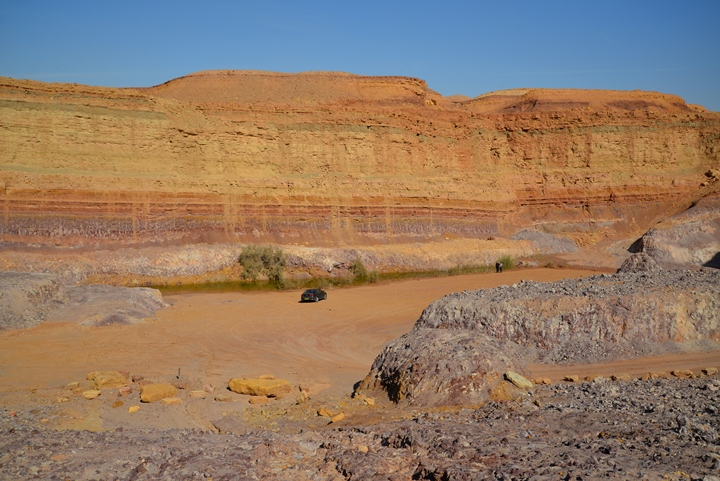
The materials in the layers – clay, sandstone and gypsum – are rich with minerals, having various industrial uses. Quarries were constructed inside the Makhtesh in order to extract these materials and minerals, sustaining damages to the natural landscape of this unique place, a UNESCO world heritage center since 2001.
In 1994 the commercial activities were regulated in order to preserve the natural view of the Makhtesh. Most of the mining activities inside the crater was frozen, as Ramon became a natural reserve. In 1998 the Quarries rehabilitation fund (QRF) rehabilitated 30 of the mines along road #40 in order to open them to the public, such as happened in this site.
The quarry exposed colorful layers, ranging from yellow through pink to bright red, which are results of geological processes that started 100 million years ago when the Tethys Ocean covered the area. The sandstones have various colors, created when the sand on the bottom of the Tethys Ocean absorbed different minerals. The red color has a high iron content, the green – copper, the yellow – Manganese, and the orange – sulfur.
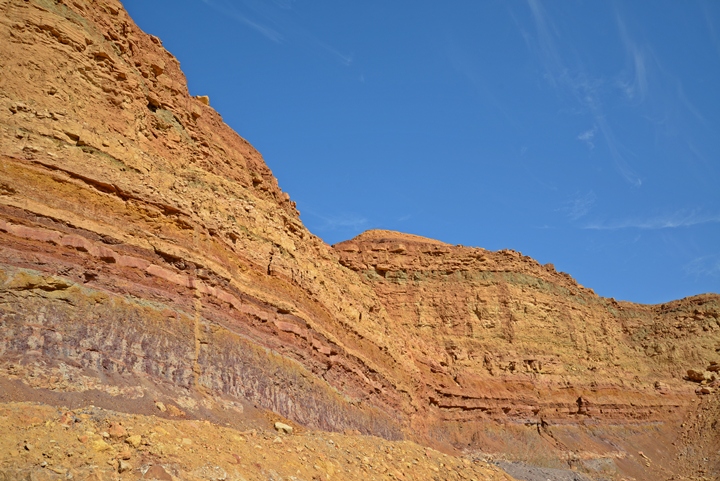
The bottom of the quarry is under the water level, and so during the winter the underground waters seeps from the walls, filling up the bottom and creating a shallow pond.
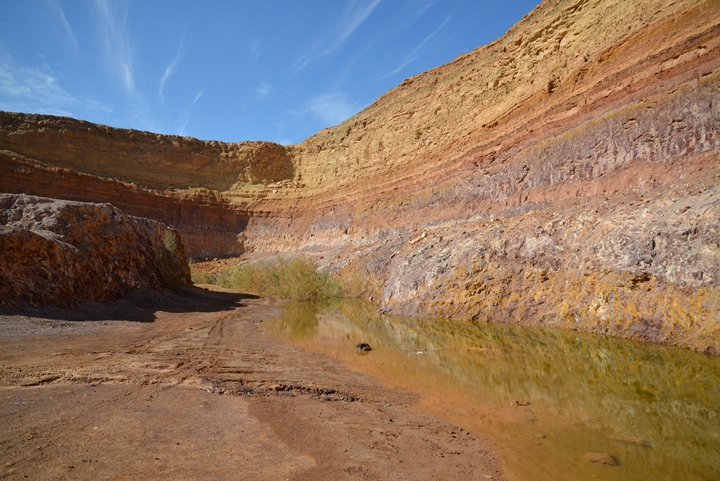
This spring is named “Mish’hor spring”, where the term is a geological formation that gave the name to this area.
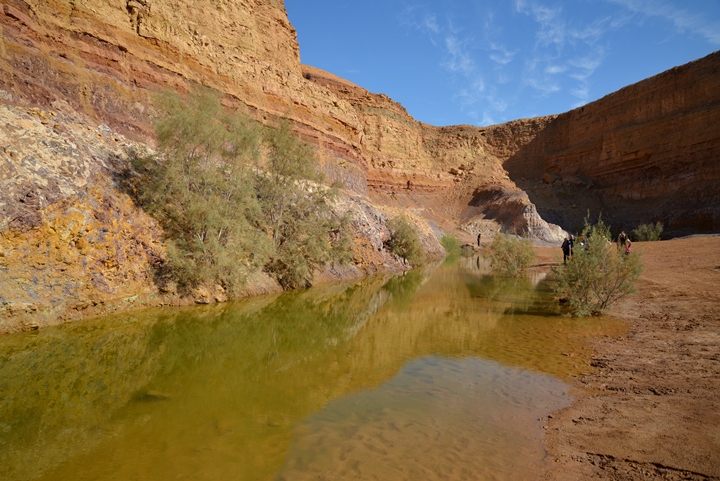
An earlier layer, dated to the Jurassic period (201.3-145 Million years ago), is called the “Mishhor” formation – a reddish color with bright spots on the lower side. This layer is made of Laterite (a soil and rock type rich of aluminum and iron) and flint-like clay (Bauxite, the brighter spots in the layer). The iron-rich Laterite gives the rocks a rusty-red coloration. The rocks were formed as a result of fossilization of the soil during a Tropical climate (humid and hot).
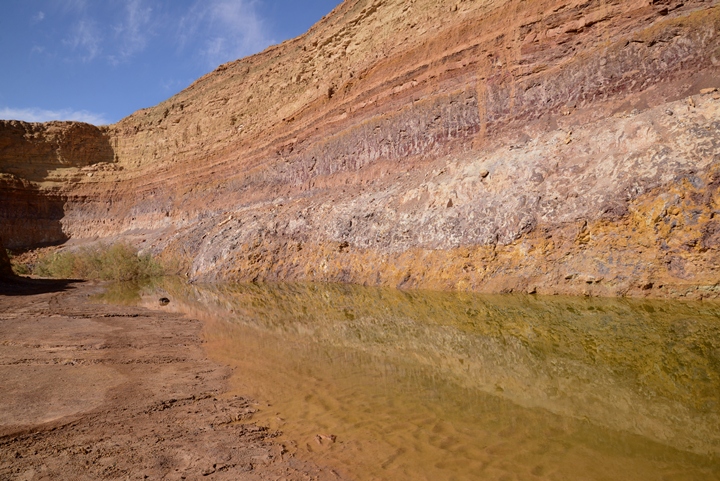
More views of the water and the colorful walls are seen below:
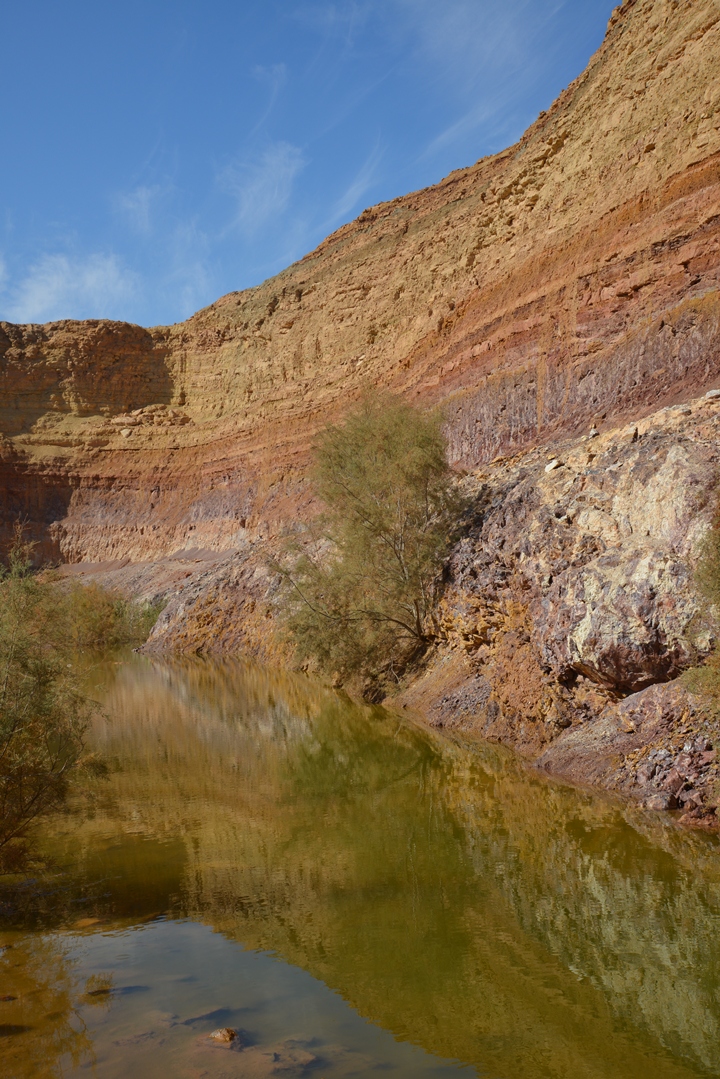
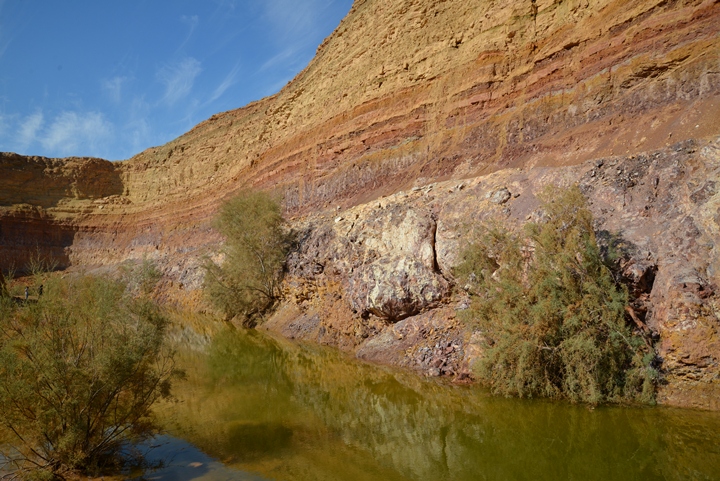
(d) Gypsum quarry:
Another abandoned quarry is located 200m south of the main road of Makhtesh Ramon (#40). This was a gypsum quarry, which was first established during the British Mandate in the early 20th Century. It became one of the quarries of “Nesher” (Eagle), an Israeli cement company which was established in 1925.
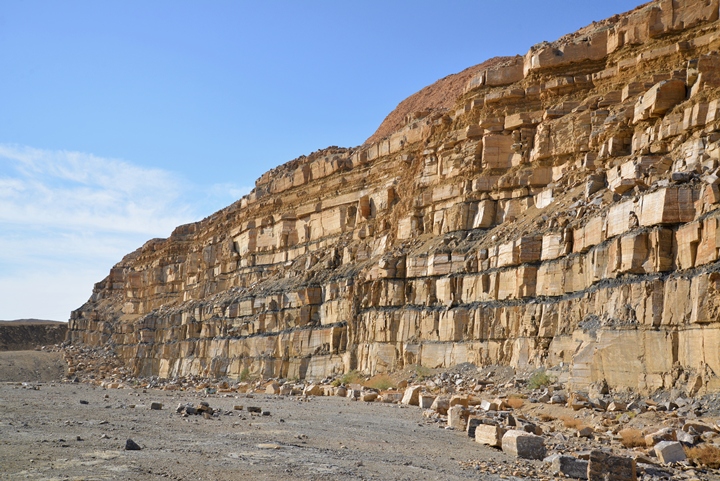
In these photos, there are layers upon layers of the rock. The gypsum layers were created by deposits on the Tethys Ocean. It is a soft rock, like sandstone. In its pure form, gypsum is white. With various impurities, the gypsum rocks have a wide range of colors.
Gypsum (Hebrew: Geves) is used to produce “Plaster of Paris”. The industrial process of producing the Plaster of Paris is as follows: the rocks are first quarried, then grinded to a fine powder, then finally heated by an oven to 150 °C (300 °F) in order to clear the moisture absorbed in the rock. When Gypsum looses its water, it converts to calcium sulfate hemi hydrate (commonly called “plaster”). The final product, a grey powder, reverses this process when water is added to the powder and becomes again solid.
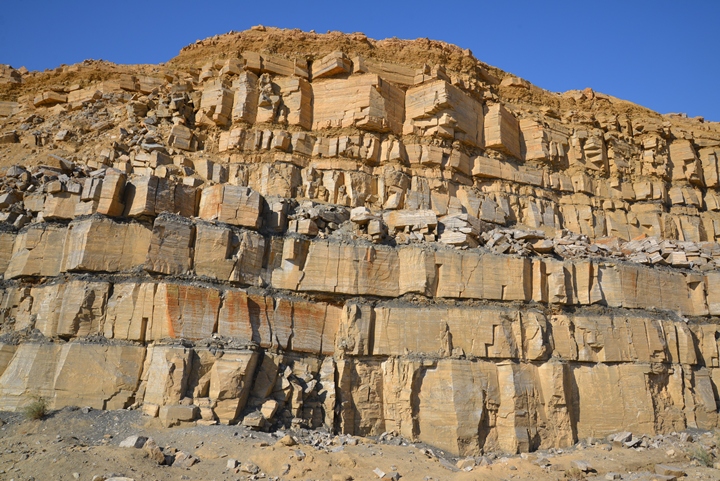
The Gypsum is also used for other industrial processes, and is one of the ingredients of cement.
A close up of one of the rocks is seen in the following photo.
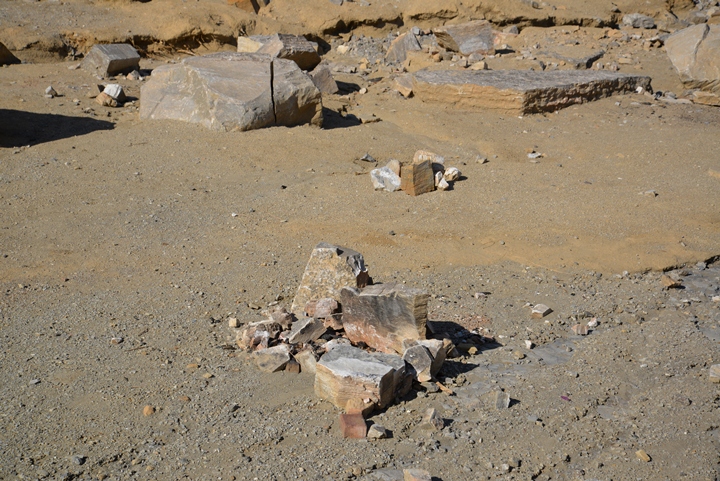
An overnight camping site is located by the side of the old quarry.
(e) “Saw Mill”:
The “saw mill” is a sand stone hill where thousands of prism-like rocks are scattered around it. South of the this site, along the main road that crosses the crater, is the colored sand recreation park.
![]() For more info, visit the Saw Mill and Colored Sands page.
For more info, visit the Saw Mill and Colored Sands page.
(f) Camel Hill:
Camel Hill (Har Gamal) is small pointed hill located near the northern rim of Makhtesh Ramon. Remains of an Early Bronze Age village are located on its western foothills.
![]() For more info, visit the Camel Hill page.
For more info, visit the Camel Hill page.
Etymology (behind the name):
* Names of the area:
- Makhtesh – a unique geological cirque (Hebrew name, used also in English)
- Ramon – the Hebrew name of the cirque, based on the Arab name
- Raman – Arab name of the cirque, unknown meaning
- Mishhor – Hebrew for a geological formation
Links and References:
* External links:
- Geological dating of Makhtesh Ramon Amit Segev, Tuvia Weissbrod, Barbu Lang (2005; pdf, 24 pages)
- Geological workshop EARSel 6 – Eyal Ben Dor, Arnon Karnieli, Yaakov Anker, Emanuel Mazor (2009; pdf, 21 pages)
- Conservation of the Makhtesh Ramon mines (Hebrew, 2008)
* Internal:
- Gamal Hill, Har Gamal observation site and ruins of Early Bronze village on the northern rim
- Saw Mill and colored sands
- Makhtesh Katan (small crater)
BibleWalks.com – We like the hike…
Gamal Hill <—previous site—<<<All Sites>>>— next Negev site—> Mashabei Sadeh
This page was last updated on Dec 23, 2015 (Added general views)
Sponsored links:
